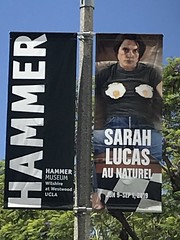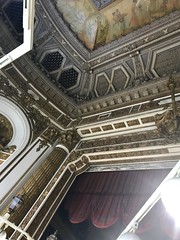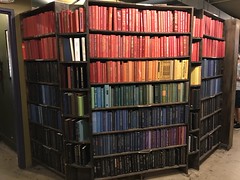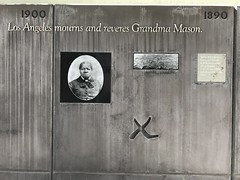Our Thanksgiving weekend movie was Knives Out. What a fun suspenseful whodunnit, contemporary but with the classic feel of an Agatha Christie mystery. It has all the elements: a big mansion with hidden elements and creaky stairs, the apparent suicide (or was it?) of an elderly multi-millionaire author (who made his fortune on – what else – murder mysteries), and a houseful of dysfunctional family members each with their own motive for wanting grandpa dead. Something is clearly afoot at Thrombey Manor, and only ace mystery solver Benoit Blanc (charmingly played by Daniel Craig sporting a genteel southern accent) can get to the bottom of it. Writer/director Rian Johnson skillfully spins out the mystery Rashomon style, as each family member is interrogated in turn, and we see each recollection of the events of the fateful night, colored by their biases and motives, then airbrushed and embellished as they tell it to the detectives. Jamie Lee Curtis, Don Johnson, Chris Evans, Toni Collette, and several others provide the colorful characters on this Clue board. The deceased patriarch was portrayed by Christopher Plummer as such a chess-master that his stories must have been at least this good (and how much of this one last story did he himself orchestrate?). And then there’s Marta, the nurse-companion, an immigrant from some ambiguous Latin country with the inconvenient inability to lie without throwing up. Everyone seems to love her and consider her part of the family. At least until the knives come out. This mystery has donut holes inside donut holes, and you probably won’t figure it out before Benoit Blanc does, but looking back, you’ll see that all of the clues were there. Such good fun!
Also have to give a shout out / plug to Exceptional Minds Studio, a local non-profit professional training academy and studio for visual effects artists and animators with autism. Exceptional Minds did the closing titles for this film. They provide individuals on the autism spectrum with the technical and behavioral skills required for employment in the entertainment fields of animation and post production visual effects, with the goal of breaking the vicious stereotypes resulting in low expectations that burden those in our society with special needs. I have two cousins who have graduated from this exceptional academy, and we are regular supporters. (Thanks, no doubt, to Jamie Lee Curtis for the opportunity to work on this film. She is a notable supporter of Exceptional Minds.)
Also have to give a shout out / plug to Exceptional Minds Studio, a local non-profit professional training academy and studio for visual effects artists and animators with autism. Exceptional Minds did the closing titles for this film. They provide individuals on the autism spectrum with the technical and behavioral skills required for employment in the entertainment fields of animation and post production visual effects, with the goal of breaking the vicious stereotypes resulting in low expectations that burden those in our society with special needs. I have two cousins who have graduated from this exceptional academy, and we are regular supporters. (Thanks, no doubt, to Jamie Lee Curtis for the opportunity to work on this film. She is a notable supporter of Exceptional Minds.)









































